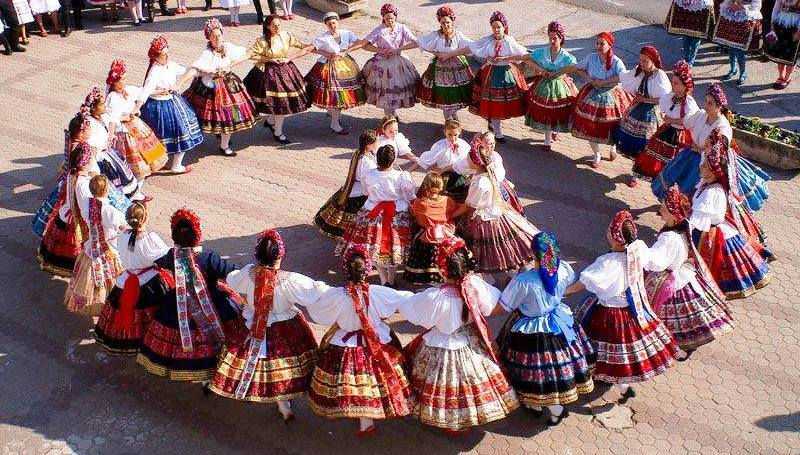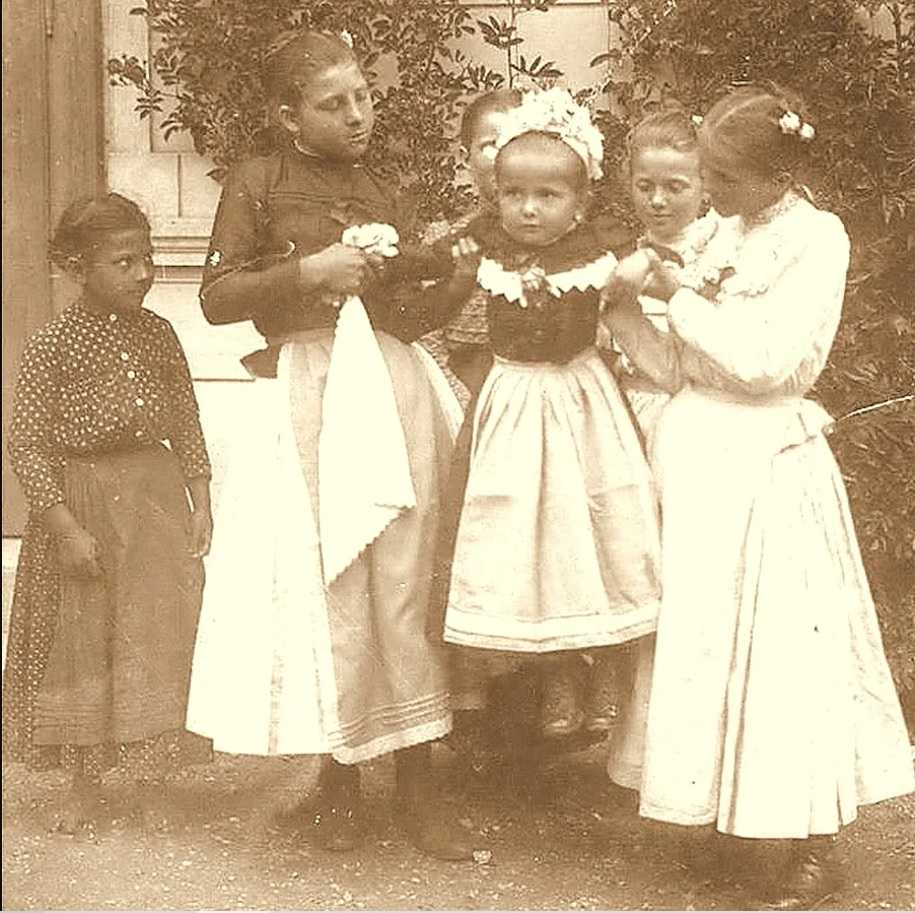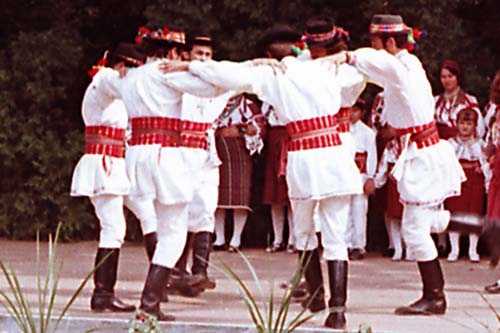In the Hungarian folk dance tradition, there are dances that are linked to a certain occasion, and among these, those that are “connected to the most important ritual of the respective custom” stand out, e.g. the bride’s baptism or the burial of the dead at a funeral. These are also known as ceremonial or ritual dances. The function and purpose of these dances can be very diverse. Some were performed to prevent trouble, others were used for fertility magic, but also for purification. They may have been used for initiation, to belong to a particular social class, to show respect, but they were also danced to enhance the mood.
There were elementary forms of these ritual dances, dating back to pre-Christian times. A good example of this is that in the village of Erdőkocsány, at the beginning of the century, women went to the tavern to dance at the end of the meat feast, and it was believed that the woman who jumped the highest would have the tallest hemp. In the Transdanubian region, on the occasion of Pentecost, the Queen’s Day, the little queen was lifted up to the sky and told that her hemp would grow that high. There were also pantomime dances involving human and animal impersonations, which were performed at feasts and pig slaughtering.
Other ceremonial dances of the Hungarian people include the various dances of the chain dance. Different variations of these dances were also performed by the people, such as dancing around the maypole, dancing around the fire of St. Ivan, dancing around the bride, and men dancing with weapons.
In the village of Vicsápapáti in Nyitra County, the men in the village in „farsang” („farsang” is like carnival elsewhere) used to perform a version of the latter. Dressed in their simple festive costumes, they would gather in front of the pub and set off to welcome the „farsang”. When they arrived in front of a house where girls lived, they began to do the stick dance: they stood in a circle, each boy holding a stick. The musicians began to play the tune, to which they danced in a circle, and then turned to face inwards into the circle, which they narrowed by dancing until they were all together. When this was done, the sticks were put down, and the dance continued with a dance of dance with the girls who came up.
The women’s chain dances were mainly associated with fertility rites, spring calendar festivals, fasting periods, etc… These circle dances were accompanied by monophonic singing, which was the most important part, not the steps themselves. The hands were crossed in front or behind, the circle was a narrowing and widening circle, the circle moving in one direction when the singing was slow, alternating when it was faster.
The various ritual dances could be listed, as the repertoire is very rich. Some forms are still popular today (e.g. chain dances), but others are no longer used. Our task is to keep them alive and pass them on to young people.
Dóra Horváth


Source: https://www.arcanum.com/hu/online-kiadvanyok/MagyarNeprajz-magyar-neprajz-2/vi-nepzene-neptanc-nepi-jatek-8ADD/a-magyar-nep-tanckulturaja-8DF2/alkalomhoz-kotott-tancok-8F54/
Source of imagines: emf-kryon.blogspot.com, balatonimuzeum.hu, tudasbazis.sulinet.hu
Main photo: Men chain dance

